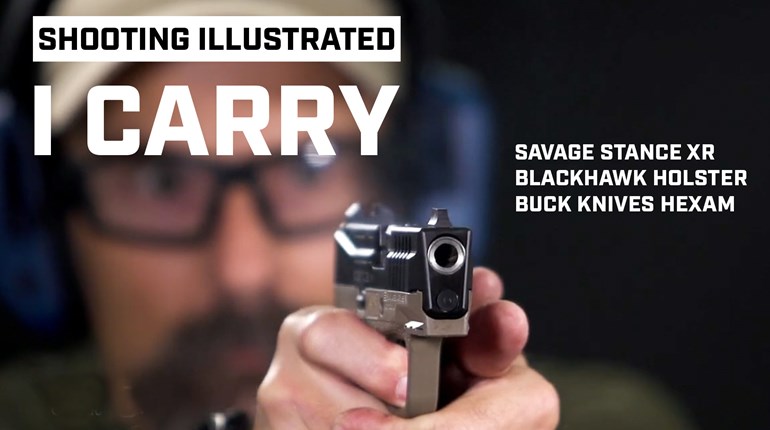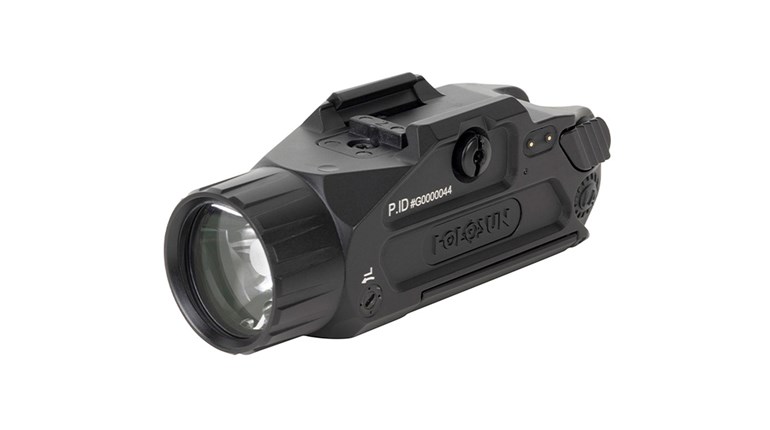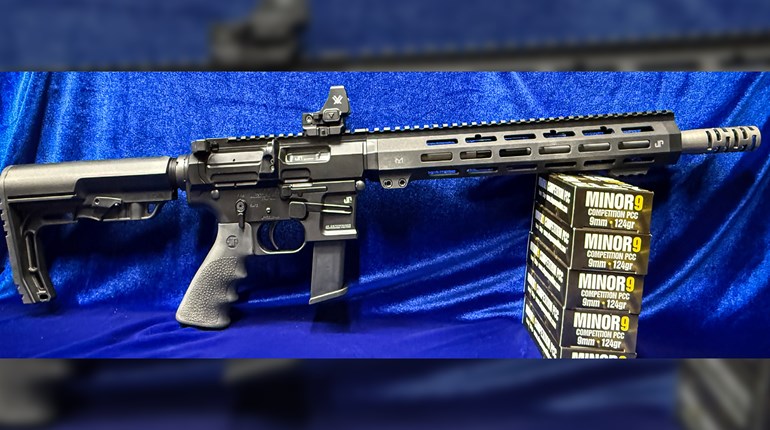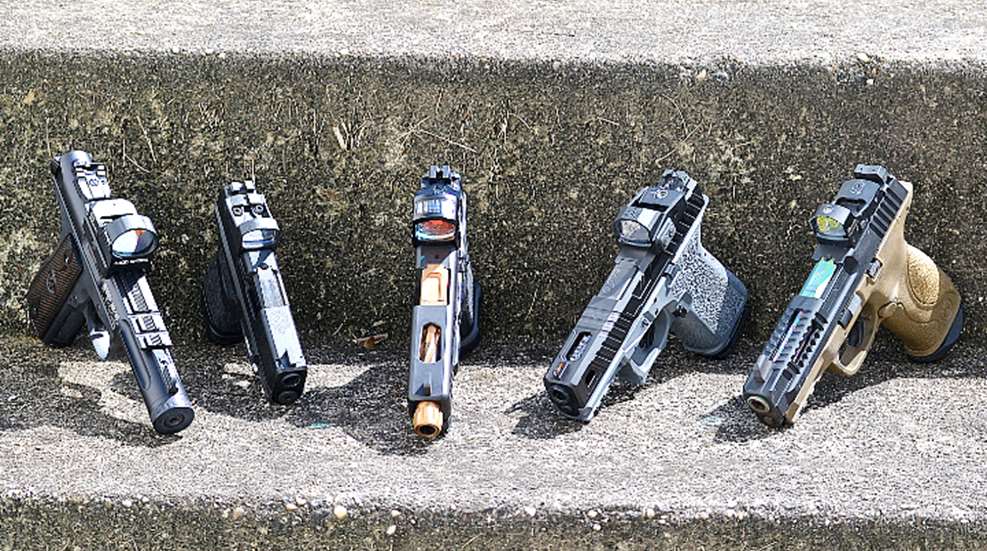
We’ve covered a number of really high-tech optics here at Shooting Illustrated, and one point that’s often made is that the price tag tends to put these optics outside the realm of the average shooter. Earlier this year, we brought you three new pistol-mounted red-dot sights where the least-expensive optic in the group was slightly less than $500. To act as a counterweight on the price, here are five pistol-mounted red-dot sights that either have an MSRP or “off the shelf price” under $300 we tested.
For the purposes of our testing, 250 rounds were used to test each sight. Ten rounds were fired at a distance of 10 yards to find the point-of-impact. Should the sight be significantly off, it would be zeroed; however, none of the sights tested were off far enough to need correction (minor discrepancies like being an inch or so low weren’t significant enough for our purposes to require correction). After these initial 10 rounds, an additional 10 rounds were fired for a single group. A minimum of 10 rounds were fired at the conclusion of testing to ensure the point-of-impact had not changed, and the remainder of the 250 rounds were fired in a single session.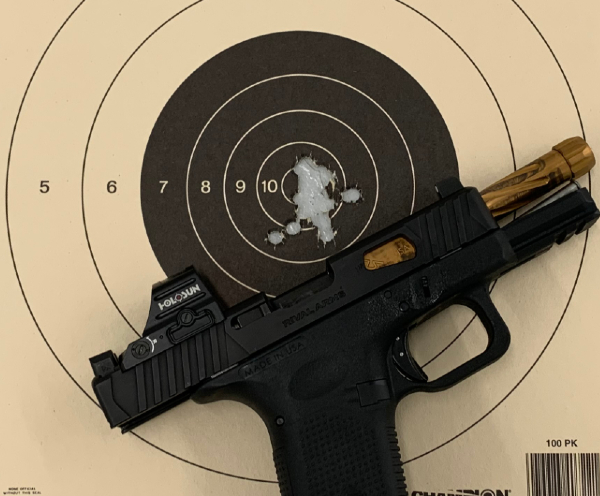
We understand that 250 rounds is not an exhaustive study; it would certainly be more thorough to have fired 500 or 1,000 rounds over a series of range trips, or, even more appropriate, to have carried the optic on a firearm for a year, firing 50 - 100 rounds a week to see how each optic held up over time. For obvious reasons, most of which having to do with time constraints, this was not feasible; our limited testing is designed mainly to detect any hard-stop failures.
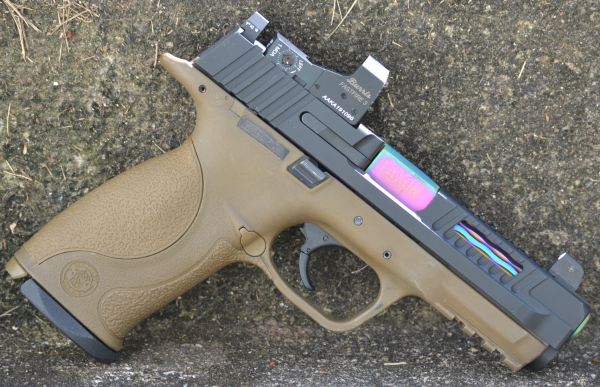
Burris FastFire3. I actually had a chance to test this one before I tested it - it was used in an episode of “I Carry” a few months prior to testing. Over the span of the 250 rounds, if anything, the sight got better - or, more likely, my shooting got less rusty. In any case, the difference between the initial 10-round target and the final 15-round target was basically indistinguishable, except that the 15-round target had a tighter group.
The brightness sensor on the FastFire3 worked well - although if you forget it’s a feature of the sight, it’s a little disorienting to see the sight change intensity briefly. I didn’t change the light levels of the range to see how it changed, but I did use the three manual settings just to check and make sure the brightness would change when I wanted it to and didn’t change when I didn’t. Everything was fine; in fact, were I not testing the sight I would have just ignored the settings entirely.
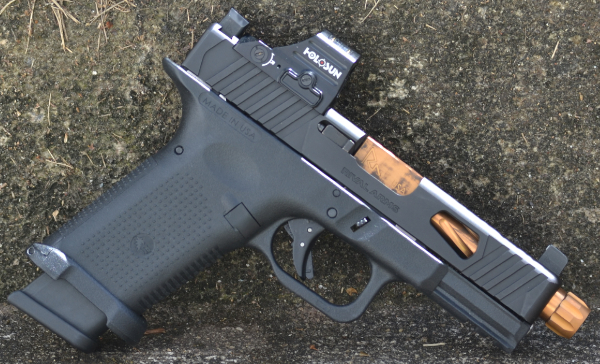
Holosun HS407c V2. One of the greatest compliments I can give to a piece of gear, be it a firearm, optic or whatever, is that it is boring. Boring means that absolutely nothing out of the ordinary happened in testing - the item in question worked exactly as expected and designed. The Holosun HS407c V2 was boring. It just plain worked. Really, about the only even slightly less-than-desirable point was that the dot’s standard brightness setting is one click dimmer than I’d prefer. And even that’s a stretch.
In fact, the HS407c V2 proved so boring, I wound up shooting the final confirmation target (shown) with 20 rounds, rather than the standard 10 I had used for the other sights. Not only did the dot not budge an inch over testing, it was absolutely spot-on the whole time. It’s not hard to see why a lot of shooters really like the Holosun red-dot sights on pistols.
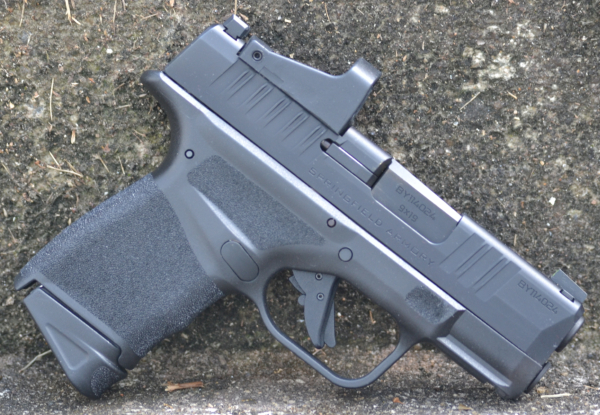
JPoint JPOINT4: The JPoint JPOINT4 probably had the deepest hole to climb out of. Given that it is the smallest optic in this group and was mounted on the smallest pistol, that’s a couple points decidedly not in its favor even before we get going. Add in that, while I really do like the Springfield Armory Hellcat, it’s a small pistol with a standard, bladed-trigger safety (I am not a big fan). None of this has anything to do with the performance of the JPoint, mind you. It’s my feeble excuse why the JPoint target had the greatest spread. That’s not the fault of the optic, but the operator.
In use, I found the JPoint to be simple to acquire and use, the dot’s brightness remained consistent throughout all 250 rounds and the point-of-impact did not change over the span of testing. As I was testing the Hellcat at the same time (It was new with the exception of two magazines in an “I Carry” episode), I ran four different types of 9 mm ammo over three bullet weights to see if it made a difference. At 5 yards, it really didn’t; at least not with my rudimentary shooting skills. At the end of testing, no difference in point-of-impact was noticed.
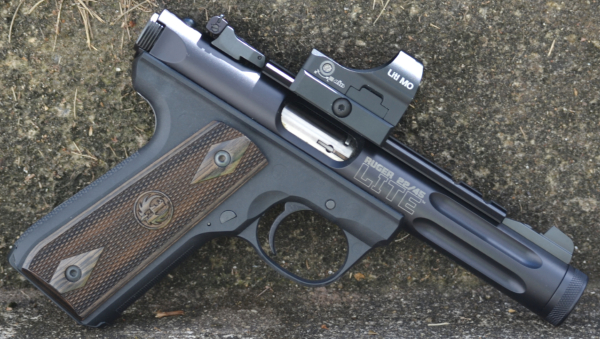
Lucid Optics Litl Mo. Now, before anyone argues about the Litl Mo being mounted on a Ruger 22/45, there’s a couple of caveats. First, it was used on a Smith & Wesson M&P for an episode of “I Carry” and held up to centerfire recoil just fine. Second, I owned a .22 LR pistol with a red dot years and years before I ever put a mini-dot on a centerfire pistol. There’s a lot of uses for a red dot on a rimfire pistol, and one of those uses I’d argue is the most important one: starting a new shooter off right.
Literally only one single hiccup was experienced in the testing of the Litl Mo, and (spoiler alert) it had nothing to do with Lucid’s optic. About halfway through testing, I noticed that the optic had worked itself a little loose - or so I thought. For the purposes of this testing, I didn’t loctite anything down - it’s a combination of being lazy, not wanting to make my life difficult when it comes time to take the optic off and also a bit of curiosity on how well the optic stays attached if you just crank it down hand-tight. Not scientific at all, mind you, just idle curiosity. Well, something did work loose, but it wasn’t the optic - it was the rail on top of the Ruger. Should have loctited that down, mea culpa. A quick spin of the screwdriver and it was fine.
As for the Litl Mo’s operation? It worked great. The dot is crisp, easy to pick up in the generous window, and didn’t change zero at all over 260 rounds (I was having so much fun I went a little over). We’ve run this optic on a centerfire pistol with no problems and extended time on a rimfire; when it comes to reliability, we’ve experienced no problems with this Lucid sight nor with others from the company.
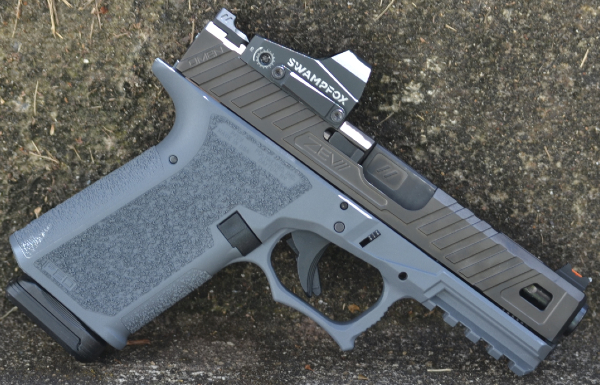
Swampfox Kingslayer. I found out two completely unrelated things about the Kingslayer. First, and this is by no means any sort of knock, I don’t care for a circle-dot reticle in a pistol-mounted red-dot sight. While the circle part really does help in acquiring an initial sight picture, I find it actually slows things a tiny bit, as it becomes somewhat of a two-step process: Acquire the circle-dot, then drill down to the center circle for more precise aiming. Again, this is not a knock on the Kingslayer by any means, and it can be outfitted with just a 3-MOA dot.
Second, the brightness controls are rather sensitive. I had the oddest experience with the first few magazines in testing, in that each time I swapped magazines, the reticle brightness increased to the highest setting. Initially, I thought that recoil was driving this, which would have been unfortunate. However, where it was only happening after magazine changes, I stopped and performed one of the changes slowly and deliberately. Sure enough, I was activating the brightness control when I grabbed the top of the slide to release and charge the pistol.
Aside from these two observations, the Kingslayer performed admirably. Once I stopped grabbing the controls the reticle stayed at the desired brightness; the center 3-MOA dot was clear and distinct; and 250 rounds did not change the point-of-impact in the least. From start to finish, it performed consistently and 100-percent as expected. Frankly, I was quite pleasantly surprised, given the sub-$220 price tag. As for the circle-dot? I think it is a little busy for a concealed-carry pistol - but it might be perfect for an AR-based pistol...
While we understand the testing protocol is perhaps more limited than some would like, it does provide some real-world data. In our testing, none of the dots experienced loss of zero, unexpected changes in brightness or other malfunctions. Only one optic has an MSRP over $300 (the Lucid is $309) and all can be found for significantly less than $300 “off-the-shelf” in retailers.












